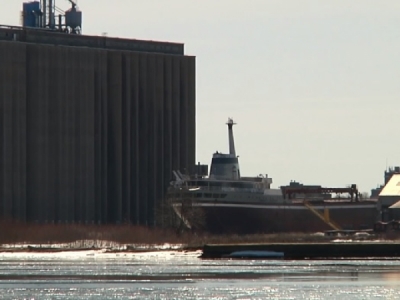
Posted on May 8, 2019
It’s part of the St. Louis River Area of Concern (AOC) on the lake. Work will be funded through a cost-sharing partnership with the Wisconsin Department of Natural Resources, the city of Superior and Fraser Shipyards.
SUPERIOR, Wis.-The U.S. Environmental Protection Agency has announced a $13.8 million cleanup of Howards Bay in Superior.
It’s part of the St. Louis River Area of Concern (AOC) on the lake. Work will be funded through a cost-sharing partnership with the Wisconsin Department of Natural Resources, the city of Superior and Fraser Shipyards.
“The Howards Bay project is yet another example of progress being made through public-private partnerships under the Great Lakes Restoration Initiative,” said EPA Region 5 Administrator Cathy Stepp. “Cleaning up decades’ worth of contaminated sediment in the bay is a critical step in restoring the St. Louis River Area of Concern.”
“This is an important milestone in our efforts to clean up this toxic hotspot,” said Wisconsin DNR Secretary-designee Preston Cole. “Removing legacy contaminants is a priority for this administration, and the DNR, which is why we are also asking for additional funding in the budget so we are able to finish the job. Without this crucial funding, the worse it is for the environment and the more expensive it becomes.”
Howards Bay is an industrialized embayment located in the Wisconsin portion of the St. Louis River AOC. The site has been the location of multiple shipyards, commercial shipping activity and other industry since the early 1800s. Over time contamination has built up in the sediment at the bottom of the bay, damaging fish and wildlife habitat and the aquatic food chain. Dredging has been restricted in the bay due to the contaminated sediment, making it difficult for large vessels to access the shipyards.
Sampling has detected elevated levels of tributyltin, polycyclic aromatic hydrocarbons and heavy metals including mercury and lead. The cleanup will include dredging 87,000 cubic yards of sediment and placement of a sand cover to control remaining material as needed. Construction is expected to begin in 2020.
Source: fox21online.com





